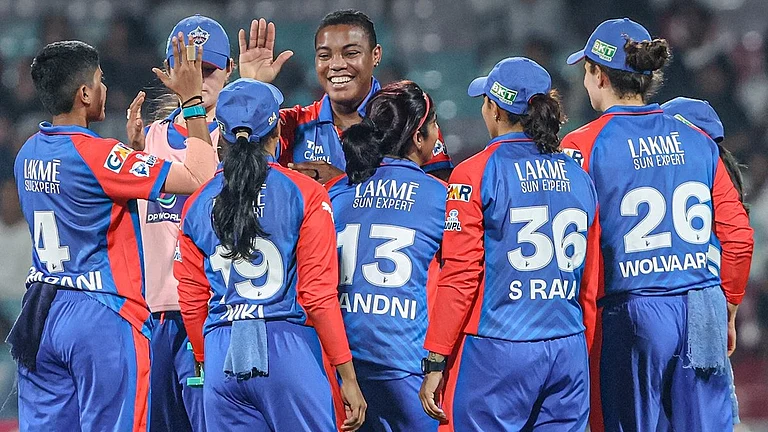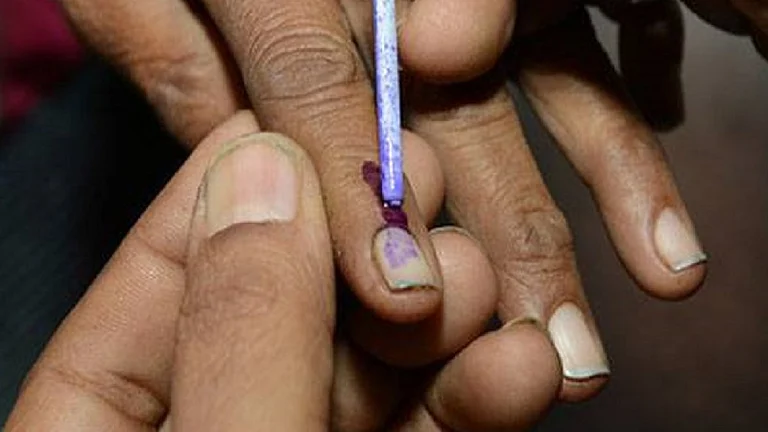Dr Santhosh Kumar SS, a medical practitioner from India, who is a team member of Project Hope, a non-profit organization providing humanitarian assistance in conflict zones, has been working in South Gaza since November. Dr. Santhosh arrived in Gaza from another war field, Ukraine, where he has been working for the last one and a half years. He reached Cairo on November 25 and departed for Rafah, the city bordering Gaza. Half of Rafah lies in Egypt and the other half lies in Gaza. It took two weeks to get permission to cross the border and reach South Gaza.
******
The border is closed. Even trucks transporting food and medicine are held up at the border. The city is devastated. The border highway used to see the passage of 500 trucks a day at least in peace times. Now, even 200 trucks are not allowed to pass. We were held at the border for two weeks. Geographically speaking, Rafah is in Egypt, but the complete authority and control go to the Israel check post. Even humanitarian workers have to get permission from three authorities --- the governments of Israel, Egypt, and Palestine --- to cross the border and reach Gaza.
Is the international community listening to the people of Gaza? It is so disappointing that they do not allow even humanitarian assistance to cross the border.
Not only bombs, but also scarcity of clean water and food, epidemics, lack of life-saving medicines, and medical care, cause deaths in Gaza. We have been witnessing one of the worst genocides in history. We are unable to handle emergencies due to the scarcity of medicines.
People die even from non-communicable diseases. A person with multiple conditions, such as hypertension and diabetes, died due to the unavailability of insulin and other essential medicines. There is an acute scarcity of medicines, even for terminal diseases. For instance, if a heart patient does not take aspirin for a few days, the chances of a heart attack significantly increase.
Those suffering from heart attacks or strokes are left with no chance. We've helplessly witnessed such deaths.
This feeling of helplessness—the inability to save lives that could have been saved if medical facilities were available—is the most agonizing experience for a doctor. Dialysis and other life-saving services have been halted in most hospitals. Amoxicillin is the only medication available. Even individuals with minor injuries from airstrikes succumb due to secondary infections caused by the scarcity of wound dressing materials and necessary medicines.
North Gaza lies in complete ruins, yet civilians continue to inhabit the area, lacking food, shelter, and medicine, simply because they have nowhere else to turn. After the devastating airstrikes, only five hospitals have survived in North Gaza, albeit with limited functionality due to a severe shortage of medicines and healthcare professionals. Residents in both North and Central Gaza are urged to flee, but the question remains: where can they go? Their maximum reach is Rafah, which marks the end of their escape route. Consequently, refugees find shelter in schools located in South Gaza, with an overwhelming population of 8,000 to 10,000 individuals in a single school.
We tried to establish clinics within these schools, but the acute shortage of medicine and medical equipment hindered our efforts.
There were 35 hospitals in South Gaza; presently, only fifteen remain operational. My team has been trying to set up small clinics to provide basic medical care, but they are hindered scarcity of resources. Scarcity extends beyond medicines; there is also a severe shortage of fuel and electricity. The absence of fuel even impedes basic tasks like sterilizing syringes. Humanitarian aid can solely pass through checkpoints controlled by Israel; unfortunately, nothing is allowed to pass through. Repeated appeals have been made to the Palestine Red Crescent and the Government of Egypt to hasten the movement of humanitarian aid, but the requests have been in vain.
Attempts to set up makeshift clinics have also been met with obstacles. Among the refugees, approximately 50,000 women are pregnant. Deliveries occur in refugee camps and homes, leading to higher risks for both infants and mothers.
There are doctors, nurses, and other health workers among the refugees. Many Palestinian individuals, who were previously employed in hospitals in North and Central Gaza, have sought refuge in South Gaza. They are aiding in establishing clinics in cities such as Rafah and Khan Yunis (in Central Gaza). Approximately five small clinics have been set up, including a maternity clinic operated by the courageous health workers of Gaza. Despite being displaced to refugee camps, they remain committed to their duties, providing medical care and support to fellow refugees.
Dr Inas, an anesthetist from North Gaza, stands as one of the unsung heroes in Palestine. I crossed paths with her during their collaborative work with Doctors Beyond Borders, a non-profit organisation working in conflict zones. When the conflict erupted, Dr Inas was serving in a hospital in the West Bank. Escaping the West Bank with her family, she sought refuge in Khan Yunis, located in central Gaza.
We were in contact when she arrived in Khan Yunis. We planned to establish a hospital in Dayr Al Balah. Dr. Inas selflessly volunteered to spearhead this initiative. She managed to secure a residence and initiate a clinic.
However, communication with Dr Inas abruptly ceased after a few days. It later emerged that she hurried back to North Gaza to rescue the lone surviving child from her mother’s sister's family, who tragically lost everyone else. The escalating airstrike in Central Gaza prompted other doctors and medical personnel to flee the hospital and seek shelter in South Gaza. Dr Inas, too, eventually made her way to Rafah.
Amid incessant gunfire and airstrikes, Dr Inas undertook a two-day journey covering 25 kilometres. Sadly, the aspiration of establishing a hospital to aid war victims in Dayr Al Barah was dashed. Presently, Dr Inas and others reside in refugee camps in Rafah. Despite their medical proficiency, their hands are tied due to an acute scarcity of medicines and medical equipment, limiting their capacity to assist.
Our colleagues in central Gaza have been stranded due to the intensified bombing. They are now completely cut off. With no fuel or electricity available, the clinics have ceased operations. The cost of oil has skyrocketed, compelling them to manage with firewood. They lack even basic supplies like chlorine tablets for water purification. About 2 million people live as refugees in the 16-square-kilometer area of Rafah in South Gaza. If the war persists without a resolution, a greater number of people will likely succumb to hunger and epidemics than those killed in the airstrikes.
(As told to Shahina KK)





















